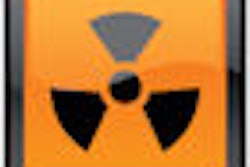
Imaging advocates are beginning their final push for changes in the California radiation protection law, hoping to have everything settled before the law takes effect in July. The language fixes, compiled in California Assembly bill AB 510, were amended and passed by the Assembly last week and sent on to the state Senate.
The California Radiological Society (CRS) and the California Hospital Association are backing the new language; CRS remained neutral on the original bill throughout its passage due to several provisions it considered cumbersome or inappropriate to the efficient practice of medicine. The California Hospital Association is working with CRS to shepherd the revision through the California Legislature and get it signed by Gov. Jerry Brown before the July 1 effective date.
The original bill signed in 2010, SB 1237, was sponsored by the trial lawyers lobbying group Consumer Attorneys of California after more than 300 patients in Los Angeles and other California cities suffered radiation overdoses while undergoing head CT scans in 2009. At its core, SB 1237 aims to eliminate such accidents by requiring facilities to report radiation errors, particularly overdoses, to patients and physicians in the electronic medical record, as well as to the California Department of Public Health (CDPH), the state agency that oversees medical safety.
Language needs fixing
However, the original bill's language, which was mostly written by nonphysician attorneys, needed some fixing, according to CRS Executive Director Robert Achermann, who spoke with AuntMinnie.com.
As a result, AB 510 consists of some general housekeeping and fix-up measures that imaging advocates have wanted to amend from the start; together, they are important to healthcare facilities' ability to practice radiology efficiently, he said.
The original bill's references to "accredited facilities," for example, are revised in AB 510 to "CT x-ray systems ... accredited by an approved organization." The American College of Radiology (ACR) and other accrediting organizations do not accredit radiology facilities themselves, but rather the x-ray equipment they operate to ensure appropriate radiation exposure control, a detail that was missed by law's original drafters, according to Achermann.
In addition, "we are exempting from dose reporting CT [scans performed] for radiation therapy planning ... and interventional radiology," Achermann said. These treatment-planning images are typically acquired on scanners not used for any other purpose. They tend to be older models with fewer detector rows that are never used to produce images for diagnostic evaluation, and the ACR doesn't accredit these machines, he said.
Also, rather than requiring dose reporting whenever an anatomic region beyond the targeted organ is irradiated, the new bill requires reporting only when an anatomic region "other than intended" is irradiated.
"If you're imaging one organ in the abdomen and you end up scanning the lower quadrant of the lung or something, it's an adjacent anatomic area" under the existing law, Achermann said. Because a certain amount of overlap is inevitable in imaging, the language had to be changed to eliminate the need to report it to health officials.
The only major remaining item desired by radiology but not yet signed off by the trial attorneys relates to dose reporting, according to Achermann. The existing law stipulates that the dose (CT dose index volume [CTDIvol] and dose-length product [DLP]) from the CT scanner must be included either in the radiology report or on the patient image, but some hospitals have interpreted this provision to mean that the radiologist must include the dose from the electronic health record and also read the dose into the radiology report, Achermann said.
"That's not what we want to have happen," he said. "If the CT unit automatically records the dose, why would we want to expose the radiologist to that process?" Achermann is working with Consumer Attorneys of California, as well as CDPH, and is hopeful everything can be resolved.
"We've had some discussions with CDPH, the department that has jurisdiction, about these changes, but we need to give them the final version and talk about it as well," he said. As for Consumer Attorneys of California, "they're the original sponsors, they're a powerful political force, and we need to make sure that what we're changing is not going to diminish the impact of the law," Achermann said.
"We all want to get to the same place: more awareness of dose, more evaluation, more tracking of that dose including cumulative dose ... and lower costs," he said. "All of the other changes are OK with [Consumer Attorneys of California] -- we're down to 'do I put the radiation dose in the report or do I have it in the electronic health record.' "
Once the language is agreed upon, Achermann is not anticipating any major problems with passage in the Senate, he said, or getting the governor's signature, for that matter. Still, the clock is ticking toward the law's July 1 effective date.
"We're optimistic we'll get it done either in time or shortly thereafter," he said.
The amended text of AB 510 can be accessed here.




















